#serialkiller
Explore tagged Tumblr posts
Text
I just... I just finished watching the final episode of Hannibal (yes, for the first time) and I fear I will never in my life see again ANYTHING as BEAUTIFUL AND GLORIOUS AS THE LAST SCENE.
#hannigram#hannibal#hannibal lecter#hanigram#hannibalandwillforever#im crying#im shaking#im shocked#please god#Ineedanotherseason#cannibalistic#love quotes#life series#this series has me in a chokehold#thisseriessavedmylife#Amoamispsicopatasgays#psychology#serialkiller
69 notes
·
View notes
Text


𝐀𝐥𝐥 𝐲𝐨𝐮 𝐜𝐚𝐧 𝐟𝐞𝐞𝐥 𝐢𝐬 𝐩𝐚𝐢𝐧 𝐚𝐧𝐝 𝐬𝐮𝐟𝐟𝐞𝐫𝐢𝐧𝐠. - 𝐑𝐞𝐦𝐞𝐦𝐛𝐞𝐫 𝐭𝐡𝐚𝐭.

⤿ Biały archaiczny, choć piękny w swej istocie gmach, który zachęcał swoim nieskazitelnym pięknem, tak naprawdę skrywał pewną tajemnicę która mimo swoich bestialskich zbrodni, nigdy nie ujrzała światła dziennego. Określano go mianem - nowej nadziei na lepsze jutro, lecz tak naprawdę jego podstawowym celem było zdecydowanie coś gorszego. Za niepozornymi, a także pięknymi dębowymi drzwiami skrywały się ciemne obskurne zdarte ściany, zapach zgnilizny, podarte brudne ubrania oraz odór świeżej krwi. Nieustanne krzyki, które obijały się o tak dobrze znaną fasadę nigdy nie znalazły drogi do wyjścia, a spierzchnięte wargi, pokaleczone dłonie oraz pocięta twarz zaznały spokoju tylko wtedy gdy odważyły się na krok, który zakończył raz na zawsze to chorę szaleństwo. Jednak przed uwolnieniem się z kajdan okrucieństwa jego dzieciństwo oraz nastoletnie życie wyglądało jak z typowego horroru z, którego główni bohaterowie nigdy nie odnajdywali drogi ucieczki. Choć w rzeczywistości tak bardzo chciał doświadczyć odrobiny ciepła i czułości, to nigdy nie dane mu było tego poczuć. Jedyne co udało mu się zaznać, to ból, okrucieństwo, paranoja, jak i również zatracenie. Te wszystkie złe rzeczy, które działy się w tym budynku nigdy nie pozwoliły mu zapomnieć widoku martwych ciał, które musiał zakopywać na tyle posiadłości mając nadzieję, że kolejnym razem to nie będzie jego własne truchło. I tutaj przejdźmy do sedna, ponieważ pomimo iż udało mu się w końcu uciec z tego okropnego miejsca pozbawiając życia właścicieli owego budynku, to jednak przez te kilka piekielnych lat odcisnęło to na nim ogromne piętno, które doprowadziło do tego, że sam stał się potworem narzucając sobie ścieżkę obrońcy niewinnych istot, które w podobny sposób doznały tego samego bólu co on niegdyś. „
⤿ Charakteryzuje się ciemnymi włosami do ramion, maską na twarzy, która zakrywa jego blizny z przeszłości, oraz typowymi czarnymi ciuchami dostosowanymi do jego sylwetki.

𝐖𝐡𝐲 𝐚𝐫𝐞 𝐲𝐨𝐮 𝐬𝐜𝐫𝐞𝐚𝐦𝐢𝐧𝐠?
𝐈𝐦𝐚𝐠𝐢𝐧𝐞 𝐡𝐨𝐰 𝐬𝐡𝐞 𝐦𝐮𝐬𝐭 𝐡𝐚𝐯𝐞 𝐛𝐞𝐞𝐧 𝐚𝐟𝐫𝐚𝐢𝐝.
39 notes
·
View notes
Text





Seven - David Fincher
#seven#seven deadly sins#brad pitt#gwyneth paltrow#morgan freeman#david fincher#williamsomertsetmaugham#david mills#90s movies#y2k movies#y2k#y2k aesthetic#90s#90s aesthetic#drama#crime#serialkiller#muder#john doe#kevin spacey#se7en#se7en (1995)#cops#police#detective
29 notes
·
View notes
Text

Doodle, Jeffrey D.
#Jeffreydahmer#art#dibujo tradicional#drawing#sketch#sketchbook#doodle#serialkiller#killer#arte tradicional
19 notes
·
View notes
Text
Elizabeth Bathory (The Blood Countess)
#marytudorr#marytudorapolagist#elizabethbathoryedit#serialkiller#blood countess#horror edit#fypage#mary tudor#elizabeth bathory#the blood countess#history edit#edit#aftereffectsedits
9 notes
·
View notes
Text
Did Martin's Therapy In Claremont's Psychiatric Facility Actually Have a Positive Effect on Martin?
When we are officially introduced to Martin Whilty in the TV Series "Prodigal Son" we learn that he's been in Claremont Psychiatric Facility for at least 20 years. So that begs the question, did Martin Whilty actually benefit from the therapy and medications he was given in his incarceration in Claremont? It is said numerous times that Serial killers are made not born and therapy is meant to be used as a tool to safely deal with and talk about childhood trauma or any life traumas we may have faced and been affected by.
It's safe to say that Martin was given a mix of solo therapy sessions and group therapy sessions throughout his incarceration in Clarmont (before he escaped in Season 2 Episode 10 I believe). He would have also been given a mild sedative for aggression and/or irritability as well as possibly some mood stabilizers (we don't know what medications Martin was given or if he was given any medications besides Benzodiazepines a.k.a Benzos).
However, it's safe to say that Martin was probably given different kinds of drugs to help calm him and stabilize his mood throughout his stay. It's also important to note that therapy would also be implemented in his treatment plan. So the question I have is the following:
Was the therapy actually effective in changing Martin's mindset on murder, and did it allow him to genuinely care for his son, Malcolm?
We don't get a clear answer for this in the two seasons of "Prodigal Son", however, we do get subtexts that suggest that Malcolm is in denial of his father's improved mental state due to Martin being diagnosed as a megalomanic Narcissist who craves power and control. So it's safe to say that Martin's "love" for his son Malcolm became more of an obsessive desire to prove his worth to his son Malcolm.
As the events in "Prodigal Son" unfold we see Martin Whilty desperately trying to do everything in his power to prove to his son Malcolm that he is a changed man. Martin starts to prove this by helping Malcolm solve murder cases. This action alone is enough for Malcolm to become slightly more dependent on his father's input on the cases he's working as well as ensure that Malcolm visits Martin more often.
However, these simple interactions are not enough for Martin to prove to Malcolm that he (Martin) is indeed a changed man. We also see Martin becoming obsessed with the idea of being good, which in itself, is also a quite toxic mindset. This is because obsession, whether over something good or bad can result in toxic, manipulative behaviors that can be more hurtful than good.
In Martin's case, his obsession with proving himself a changed man results in Martin manipulating his fellow inmates into doing actions that result in Malcolm, and at some points Ainsley, being in Martin's cell and giving Martin the ample opportunity to further manipulate his children, mostly Malcolm into believing that he, Martin is a changed man.
Now that's not to say that a part of Martin isn't indeed a change man in some way. It's a big improvement for Martin to say multiple times that "murder is wrong" given the fact that he killed 23 people when he was an active serial killer. Now, that's not to say he completely changed. After all, psychologically he can't stop being a serial killer because he'll always have the urge to kill someone.
So we have to take into consideration that he can fight the urge to kill someone and that by the time we officially meet Martin in the present day, he's roughly 55 years old, so he doesn't have the physical capacity to continue killing someone, even if he wanted to. He's also been incarcerated in Claremont Psychiatric Facility for 20 years and has grown to only really care for Malcom visiting him.
So, it's safe to say that he's changed somewhat. but not completely. We get to see in the finale of Season 2, that Martin doesn't kill anyone nor does he go into his "old ways". He instead abducts his son Malcolm and attempts to bond with him by solving a missing person's case that ties into a local serial killer (not Martin of course). The goal of this was to ultimately prove to his son that he "doesn't want to murder anymore" and that he's "a changed man" to some degree.
However, when Malcolm finishes solving the case he calls in the location of the victim that they saved, as well as Martin Whitly's location. This action proved to Martin that his son would never accept him in any capacity and also proved that Martin wasn't as changed as he claimed to be. Especially when Martin decided to kill his son. This action proved that he was still "the monster" that Malcolm said he was while also showing that he still craved control, especially over his family.
So, did the therapy that Martin underwent at Claremont really help Martin? Well yes and no. Yes, it helped him realize his own toxic behaviors however it didn't help him to stop those behaviors. Therapy actually helped Martin to better hide those behaviors. Yes, it did help him to somewhat change and understand that murder is wrong, and helped him not want to murder anymore.
It also gave him the tools to become obsessive with his love for Malcolm and his family. Now that doesn't mean that Martin doesn't on some level truly love his family. It just means that Martin struggles between how to love someone and what loving someone actually entails. Due to his nature as a psychopath, he doesn't have the capacity or ability to feel/express empathy, sympathy, or remorse, however, that doesn't mean he can't on some level "love" someone. It just means he can't understand or empathize with someone else.
That said, we can safely say that therapy helped him somewhat but not completely because Martin himself didn't allow the therapy to truly be effective in changing his mindset and personality. Instead, he used it as a tool to further his obsession with Malcolm, and even went as far as manipulating the Claremont staff into getting him a job with a staff member who had a gold card once he learned that a gold card can open ALL areas of Claremont.
#prodigal son fox#prodigal son#martin whitly#malcolm bright#ProdigalSonTheories#Thoughts#MartinWhitlyMusings#musings#tom payne#MichaelSheen#serialkiller#therapy#psychology
14 notes
·
View notes
Text

RICHARD RAMÍREZ
Born on February 29, 1960, in El Paso, Texas. He suffered violence from his father, who was an alcoholic abuser. Richard suffered multiple head injuries during his childhood, according to some psychiatrists, this provoked him temporal lobe epilepsy, aggressivity, and hypersexuality. Richard Ramírez was not a born psychopath, but a “made” one, due to his childhood and experiences, THIS DOES NOT TAKE HIM OUT OF RESPONSIBILITY FOR HIS CRIMES. Once he was captured, he was convicted of 43 crimes on 20 September 1989. Ramírez spent the rest of his life at California’s San Quentin State Prison, where he received letters from fans. He even got married!!! He would end up dying on 7 June 2013 of cancer.

#the night stalker#crime#crimenews#richardramirez#serialkiller#serialkillers#horror#interesting facts#facts
43 notes
·
View notes
Text
Did You Know🤔
The Suzano massacre, also known as the Suzano school massacre, was a school shooting and a failed bombing, that took place on March 13, 2019, at the Professor Raul Brasil State School in the Brazilian municipality of Suzano, São Paulo State, The perpetrators, 17-year-old Guilherme Taucci Monteiro and 25-year-old Luiz Henrique de Castro, murdered five students and two school staff members, Before the attack in a car shop near the school, the pair also killed Monteiro's uncle. After killing most of their victims in the school, Monteiro killed his partner and then committed suicide. Eleven additional people were injured by gunshots, and gunfire was also exchanged with the police. Some were injured while trying to escape. The attack was the second major and second deadliest school shooting in Brazil, after the Realengo massacre in 2011. It is also the ninth fatal school shooting in Brazilian history. The shooting has inspired many copycat killings in and outside of Brazil.
Earlier in the day, at around 9 a.m. local time, the gunmen shot three times and killed Monteiro's uncle, the shopkeeper Jorge Antônio Moraes, in a nearby car shop. The man was taken to the hospital but succumbed to his injuries, dying hours later. According to the investigation, Castro was planning on killing a neighbor of his that was an electrician because they had had a misunderstanding months before. They had a pact, in which each one would kill someone before the school massacre. An hour and half before the school attack, Castro went to his neighbor's house. Finding the gate closed, he persistently called him out, but the man did not answer, and so Luiz went away. In the same day, one of the killers posted a series of photos in a social media platform, where he appeared with a skull mask, holding the firearm he would later use and doing a gun sign with his hand against his head. The two attackers then drove to the school in a white Chevrolet Onix that Castro had legally rented at Localiza. The crime occurred at around 9:40 a.m. local time on a Wednesday, March 13, 2019, in the Professor Rual Brasil State School, in Suzano, Greater São Paulo. Guilherme Taucci Monteiro, 17 years old, and Luiz Henrique de Castro, 25 years old, entered the building hooded, with combat boots and balaclavas with skulls. Monteiro entered the building first. He then turned around and began shooting at two school staff members as well as several students at a distance of approximately 3 feet (0.91 m) in front of him, before entering the main patio in search of more potential victims. He disappeared from camera and then moved on to the institution's linguistics center. By this time, Castro appeared on camera entering the building in a hurry while holding several weapons, including a bow which he eventually left on the floor. He approached the corpses lying on the ground and struck them with a hatchet. Fleeing students started to run from the patio towards the school entrance hall. On the way, they encountered Castro, who was still in the entrance hall. Other students who had hidden themselves when they first heard gunshots were able to avoid being shot. Five students between 15 and 17 years old and two school staff members were killed. According to the 2017 School Census, the institution had 358 students between 6th and 9th grade (middle school and freshman year) and 693 students in secondary school. The school was locked down by police, who searched it and found a caliber 38 revolver, speedloaders, a crossbow, a traditional bow and arrow, possible Molotov cocktails, a hatchet and a wired bag. A bomb squad was dispatched to the scene and found that it was a fake explosive.

12 notes
·
View notes
Text
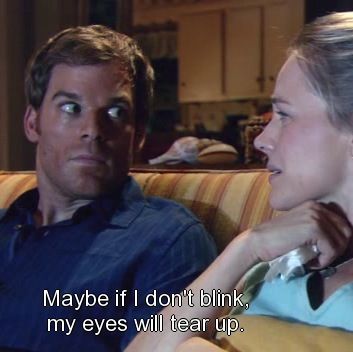
29 notes
·
View notes
Text
Put a men in a mask and I do not care what he looks like underneath.
83 notes
·
View notes
Text
Prodigal Son Playlists
Here are my Prodigal Son character playlists:
Any Other Character Suggestion? Please comment your character suggestions below!
#prodigal son#malcolm bright#martin whitly#prodigal son fox#serialkiller#tom payne#michael sheen#jessica whitly#DoctorVivianCapshaw#ainsley whitly#VivanCapshaw#TheSurgeon#tv series#Music#playlist#spotify#my playlist#spotify playlist#Spotify
12 notes
·
View notes
Text
The Unfortunate Story of Ed Gein
Ed Gein was born in Wisconsin on August 27, 1906. He had one older brother named Harry. His parents' names were Philip and Augusta Gein. Unfortunately there was a lot of turmoil in the Gein's marriage. Philip was an alcoholic who hopped from job to job, and Augusta resented him for it.
In later years, the Gein family relocated to a 155 acre farm in Plainfield, Wisconsin. Augusta never allowed visitors to the family farm for fear that they would corrupt her sons. The boys only left the farm to attend school. Their free time was spent doing chores.
Augusta was a strongly devout Lutheran. She often preached to her children about the immorality of the world around them. She often read to the boys from the darkest parts of The Old Testament.
Ed grew into a very shy young man. His teachers and peers thought of him as weird. Any time he started to make friends, he would be punished by his mother.
Although he suffered from poor social development, he did well in school, especially in reading.

Ed's father died on April 1, 1940 due to heart failure caused by his alcoholism. He was 66 years old. To help their mother with living expenses, Ed and Henry began doing odd jobs around town. Ed frequently babysat for his neighbors. He really enjoyed this because he claimed to relate more to children than adults.
Henry later began dating a divorced single mom of 2 children. The two planned to move in together. Henry soon started to worry about Ed and his attachment to their mother. He would often speak badly of her around Ed which hurt him greatly.
On May 16, 1944 the two men were burning away vegetation on their property when the fire got out of control. The fire caught the attention of local firefighters who shortly arrived to put out the flames. After the fire was sequestered, Ed reported his brother Henry missing.
A search party found Henry's body lying face down. He had been dead for some time when he was found. His initial cause of death was ruled as heart failure. He wasn't burned but had a bruise on his head.
Police initially believed that there was no foul play involved, so there was no further investigation. The coroner ultimately ruled his cause of death to be asphyxiation. Many people suspected Ed of being involved in his brother's death.
After Henry's death, Augusta suffered from a stroke, and suffered another shortly afterwards. Her health began to rapidly deteriorate, and she died on December 29, 1945. Ed was devastated. He was quoted saying that he "lost his only friend and one true love. And he was absolutely alone in the world."

After his mother's death, Ed continued to work on the family farm. He boarded up the areas of the house where his mother spent the most time: upstairs, the downstairs parlor, and the living room. Those areas remained in pristine condition while he allowed the rest of the house to become trashed. Ed mostly remained in a small room next to the kitchen. He spent a lot of free time reading magazines and adventure stories about nazis and cannibals.
Ed earned extra money by continuing to work as a handyman and doing odd jobs here and there. He also received a farm subsidy from the government. However, by 1956 he had sold 80 acres of his land.
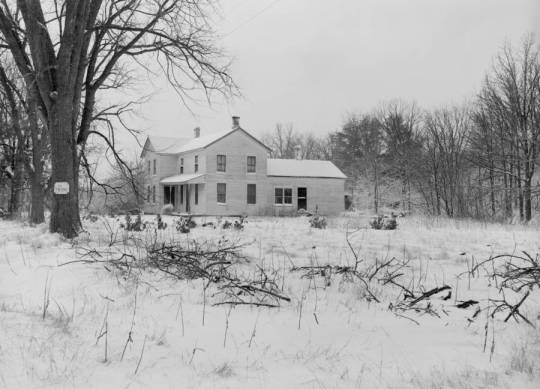
On November 16, 1957 a Plainfield hardware store owner named Bernice Wooden disappeared. A witness saw her car leaving the store at around 9:30 am. Citizens found it strange that the store was closed all day. Bernice's son Frank, who happened to be the sheriff, walked into the store at around 5 pm. He walked in to find the register wide open and blood stains on the floor. He told investigators that Ed had been in the store the night before the incident. He also returned the day of the incident to get a gallon of antifreeze. The receipt for this transaction was the last transaction recorded by Bernice. Ed was arrested later that night at a local grocery store. This also gave the police enough probably cause to search Ed's farm.
A deputy discovered Bernice's decapitated body in Ed's shed. She had been hung upside down by her legs with a crossbar. She also had ropes around her wrist. Her torso was described as, "dressed out like a deer." Her cause of death was a gunshot wound. The mutilations to her body took place postmortem.
This was only the beginning of the horror that authorities uncovered on Ed's property. Police found: human bone fragments, a wastebasket made out of skin, human skin furniture coverings, skulls on his bedposts, bowls made from skulls, a corset made from skin, leggings made from skin, masks made from skin, Bernice's head in a sack, her heart in a plastic bag near the stove, nine vulvae in a shoebox, a belt made from human nipples, four noses, a pair of lips on a window's drawstring, and a lampshade made from a human face. These items were photographed at the state crime lab before they were ultimately destroyed.
Ed admitted to robbing several graveyards between 1947 and 1956 to exhume bodies that had been recently buried. He stated that he was in a trance like state during his visits, sometimes waking up in the moment and returning home empty handed. He preferred to dig up women who resembled his mother. He took the bodies home to tan their skin which he would then use to make into different household objects. Ed later led investigators to all the burial sites that he disturbed. Two of those graves were found to be empty.
Ed's ultimate goal was to make a "woman suit" out of human flesh. He wanted to literally become his late mother. One of the gruesome objects found on Ed's property was the head of tavern owner Mary Hogan. Ed admitted to shooting her but denied any further memories of her death.
A young witness reported to police that he believed Ed kept shrunken heads in his house. Ed corroborated this, but said they were ancient relics from the Philippines. Police later determined that these were human faces from Ed's victims which he used as masks.
Ed's confession was ultimately ruled as inadmissible due to him being assaulted by a police officer during his interrogation. The officer repeatedly banged Ed's head against a wall.

Ed's trial began on November 21, 1957. He was arraigned on 1 count of first degree murder which he pled not guilty by reason of insanity to. Ed had been diagnosed with schizophrenia, and he was hoping to use his diagnosis to his advantage. He was ultimately found mentally incompetent and was not deemed fit for trial. He was sent to the Central State Hospital for the Criminally Insane. He was later transferred to the Mendota State Hospital in Wisconsin.
It wasn't until doctors reevaluated Ed in 1968 that he was found to be able to participate in his own defense. His trial began on November 7, 1968. The trial lasted for one week. At first Ed tried to play Bernice's death off as an unmeditated accident, but couldn't remember any other details about the day in question.
Ed's defense requested that his trial not be presented to a jury, so it was only a judge there to try to convince of his innocence. Judge Robert Gollmar found Ed guilty on November 14th. There was a second trial held to try to determine Ed's sanity where the same judge ruled that Ed was not guilty by reason of insanity, again. He was admitted to a mental institution. Ed remained in mental institutions for the rest of his life.
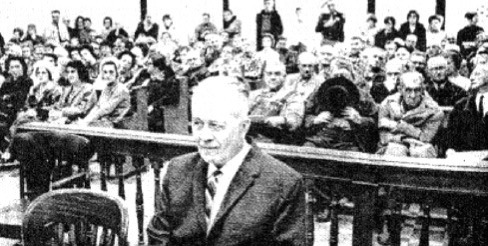
Ed's property was appraised at $4,700. This is the equivalent to over $42,000 today. His possessions were sent to auction on March 30, 1958. Due to rumors that the house would be turned into a morbid tourist attraction, it mysteriously burned down on March 20th. The fire was determined to be a "rubbish fire" that was set about 75 feet away from the house. Arson was reasonably suspected, but the potential arsonist was never uncovered. When Ed was given the news about his house, he was fairly unbothered.
Ed's car that he used to transport bodies was sold at auction for $760. This is the equivalent to over $6,700 today. The car was bought by a carnival sideshow operator. He charged the public 25 cents a pop to see it.
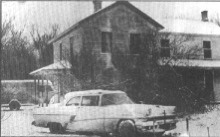
Ed Gein died in the Mendola Mental Institue on July 26,1984 due to complications from lung cancer. For many years, people slowly chipped away pieces of his headstone. The entire stone was stolen in 2000. It was later found in Seattle in June 2001. It was ultimately placed in storage. His grave remains unmarked but not unknown. He is buried between his mother and his brother.
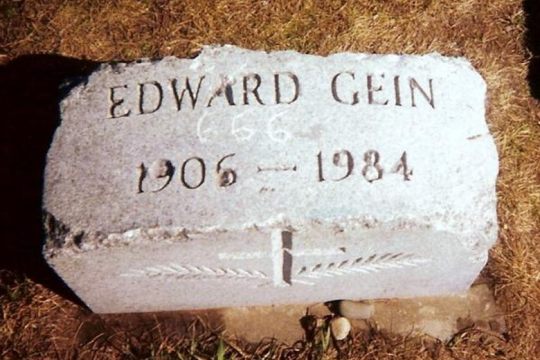
Ed Gein's story has had a large influence in modern day pop culture. Many films had antagonists that were based on Ed such as: Psycho, House of 1000 Corpses, The Devil's Rejects, American Psycho, Silence of the Lambs, and The Texas Chainsaw Massacre. Many TV shows also used Ed's likeness such as American Horror Story and Bates Motel.
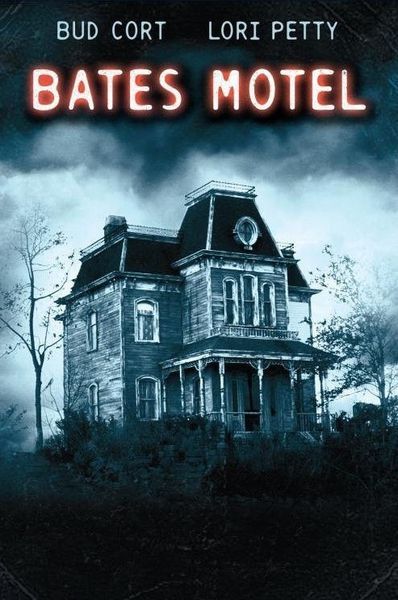
44 notes
·
View notes
Text
Watch horror movies and imagine yourself being the murderer or the victim.
62 notes
·
View notes
Text
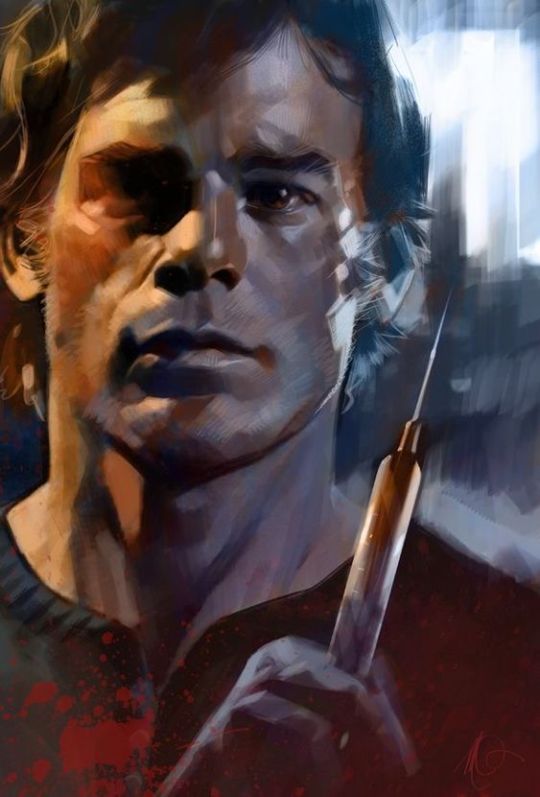
16 notes
·
View notes

